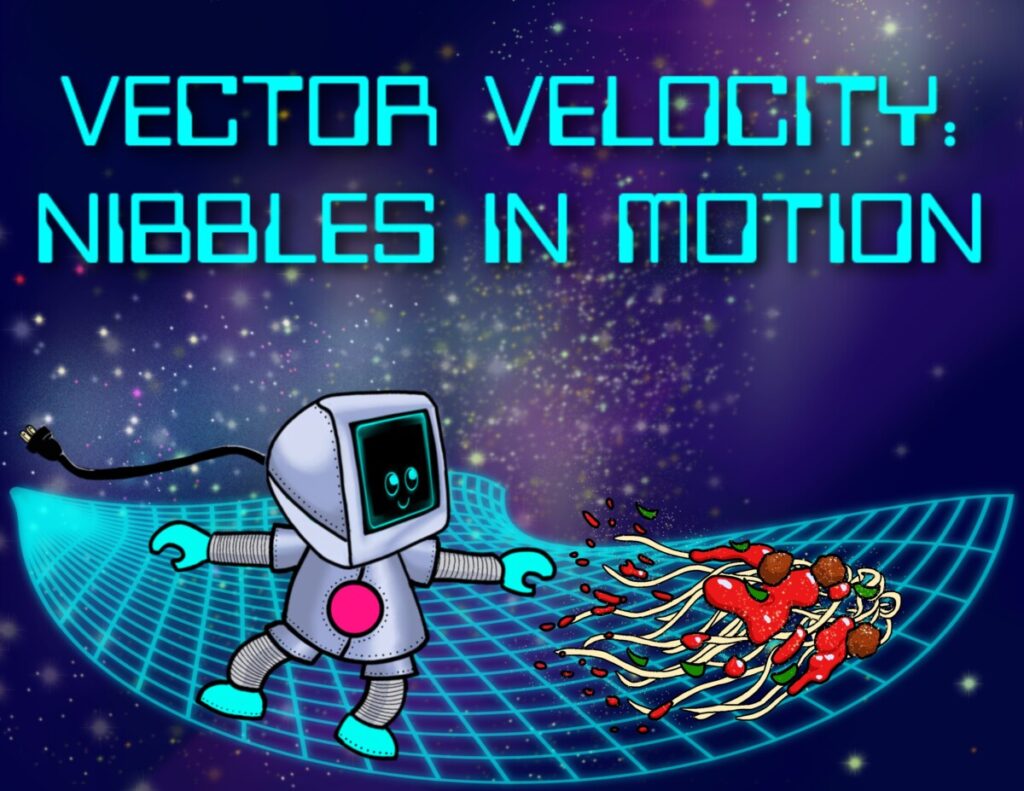
Episode title: Vector Velocity: Nibbles in Motion”
Preview
DOT has learned how to walk to their snacks, whether our directions are vectors in rectangular coordinates or in polar coordinates. DOT has one more obstacle to overcome: their snacks are on the other side of a moving sidewalk! DOT is hungry for snacks and needs your help getting to them across the moving sidewalk.
Play
[DOT game still in development!]
Practice
In this episode, we need to add vectors. We saw a version of adding vectors in Episode 1 when Anna walked in the north-south direction and then in the east-west direction; to get the vector describing her bird’s journey we added the two vectors that described Anna’s journey.
To add vectors in rectangular coordinates, all we have to do is add their $x$-components and their $y$-components:
$\vec{U} + \vec{V} = \langle U_x + V_x, U_y + V_y \rangle$.
Graphically, we are arranging the vectors $\vec{U}$ and $\vec{V}$ so that the tail of $\vec{V}$ is at the same point as the tip of $\vec{U}$. Then the vector $\vec{U} + \vec{V}$ is the vector that points from the tail of $\vec{U}$ to the tip of $\vec{V}$.
When a vector points from a point $A$ to a point $B$, it is common to give that vector the name $\vec{AB}$. With this notation, $\vec{AB} + \vec{BC}$ is just the vector $\vec{AC}$.
Apply
So far most of our vectors have been displacement vectors, which keep track of how an object moves from one point to another. Vectors can be used in an almost identical way to keep track of other physical quantities that have direction, like velocity or force.
The velocity of a moving object is understood as a vector where the units are distance per unit time. The speed of the moving object is the magnitude of the velocity vector.



